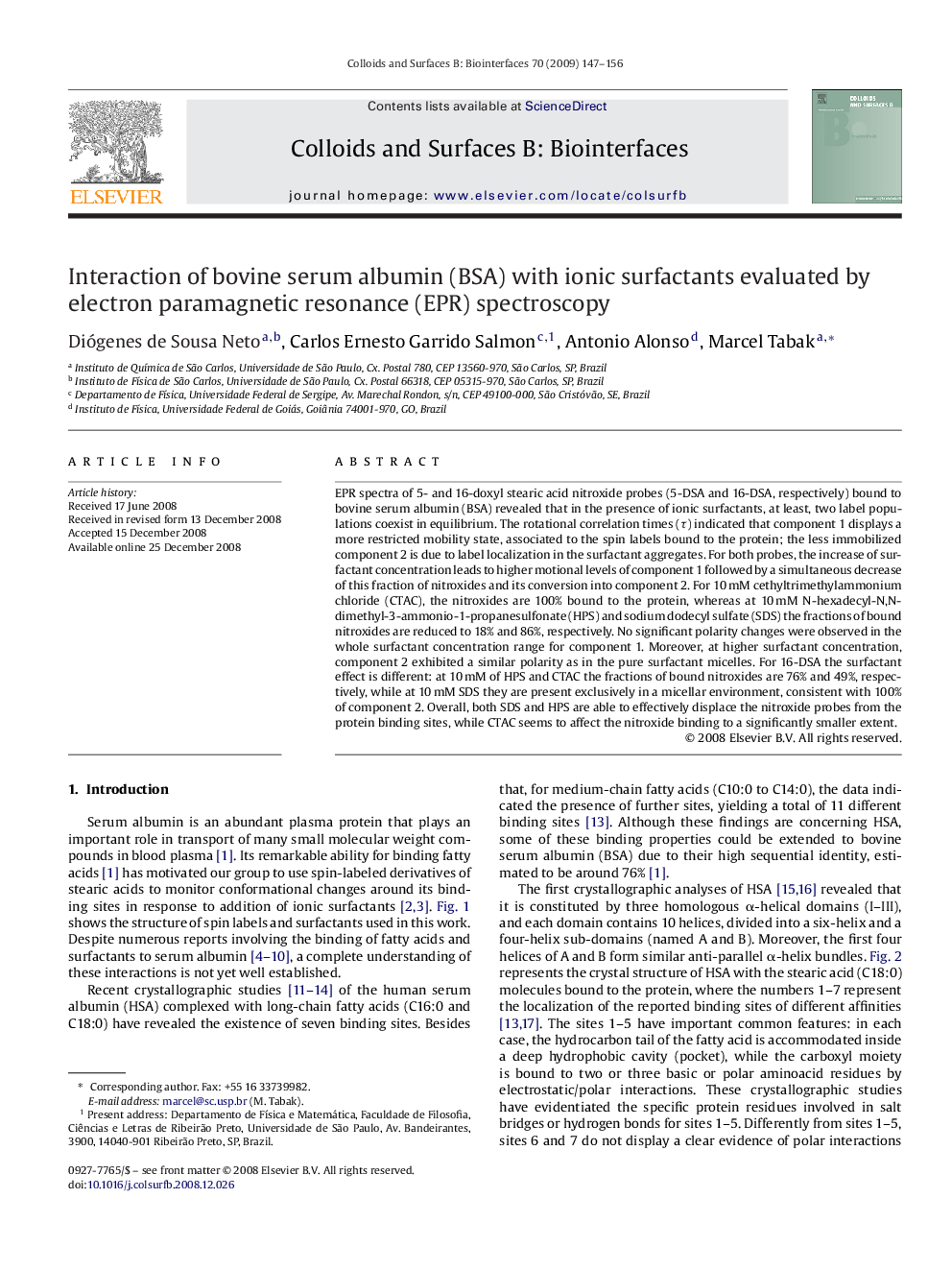| Article ID | Journal | Published Year | Pages | File Type |
|---|---|---|---|---|
| 602430 | Colloids and Surfaces B: Biointerfaces | 2009 | 10 Pages |
EPR spectra of 5- and 16-doxyl stearic acid nitroxide probes (5-DSA and 16-DSA, respectively) bound to bovine serum albumin (BSA) revealed that in the presence of ionic surfactants, at least, two label populations coexist in equilibrium. The rotational correlation times (τ) indicated that component 1 displays a more restricted mobility state, associated to the spin labels bound to the protein; the less immobilized component 2 is due to label localization in the surfactant aggregates. For both probes, the increase of surfactant concentration leads to higher motional levels of component 1 followed by a simultaneous decrease of this fraction of nitroxides and its conversion into component 2. For 10 mM cethyltrimethylammonium chloride (CTAC), the nitroxides are 100% bound to the protein, whereas at 10 mM N-hexadecyl-N,N-dimethyl-3-ammonio-1-propanesulfonate (HPS) and sodium dodecyl sulfate (SDS) the fractions of bound nitroxides are reduced to 18% and 86%, respectively. No significant polarity changes were observed in the whole surfactant concentration range for component 1. Moreover, at higher surfactant concentration, component 2 exhibited a similar polarity as in the pure surfactant micelles. For 16-DSA the surfactant effect is different: at 10 mM of HPS and CTAC the fractions of bound nitroxides are 76% and 49%, respectively, while at 10 mM SDS they are present exclusively in a micellar environment, consistent with 100% of component 2. Overall, both SDS and HPS are able to effectively displace the nitroxide probes from the protein binding sites, while CTAC seems to affect the nitroxide binding to a significantly smaller extent.
